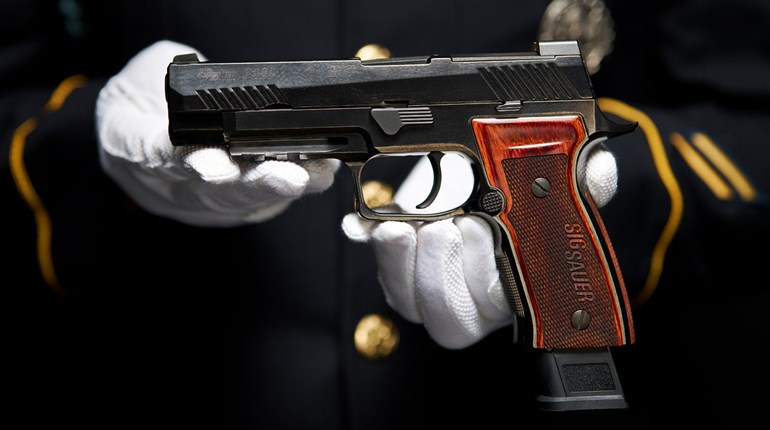
I own and run a small gun shop and repair business in the Northeastern United States, catering mostly to handguns. The majority of my customers are law enforcement and armed citizens carrying a gun for personal protection. Last week, I got a strange request from a part-time Deputy Sheriff who wanted to increase the trigger-pull weight on his SIG Sauer P320. At first, I thought he meant he wanted to decrease the trigger-pull weight, which is normal for most of my customers. In a later discussion, I learned the High Sheriff he worked for had put out a policy change that all pistols carried by Sheriff’s office employees, on or off duty, had to have triggers weighing a minimum of 10 pounds. Even though the reasoning, I’m told, is political in nature, I won’t argue with the increase in business trying to accommodate the needs of the deputies who carry a variety of brands and types of off-duty handguns that have to be “repaired” in order to meet the Sheriff’s new requirements. As I have both striker- and hammer-fired pistols to work on, what general suggestions can you offer to accomplish this project?
Name withheld by request, Via the internet
I’ll save my opinion on why your Sheriff issued this across-the-board policy change, but you can rest assured that kind of thinking is becoming more and more commonplace with elected officials in the liberal bastions of political correctness.
In general, most manufacturers providing guns to the Law Enforcement communities have parts kits that will increase trigger-pull weights. These were designed for major law enforcement agencies, such as the NYPD, that require a trigger-pull rate above the standard offering for a specific model of service pistol. These kits are sometimes available to qualified armorers and gunsmiths for field installation. In other cases, the kits have to be factory installed.
The majority of striker-fired pistols—P320 included—fire from a fully cocked striker, which means the options for increasing trigger-pull weight are limited. Increasing spring tension on the trigger mechanism or otherwise increasing resistance to achieve the required amount of pressure are about all you have to work with. Considering that reliability of a combat or defensive sidearm is essential, increasing spring tension to the trigger is the option I would pursue, unless there is an alternate factory option to increase trigger-pull weight.
Where hammer-fired pistols are concerned, there are more options to work with to increase trigger-pull weight. The trigger-return spring, sear spring and mainspring all contribute to trigger-pull weight—as does friction from all the parts that move when the trigger is pulled to fire the gun. Replacing those springs and trigger components with new ones may achieve the goal of increasing the trigger-pull weight to the desired level.
The mindset you need to have is essentially the reverse of that when you perform a trigger job on any gun. Instead of reducing friction and minimizing spring weight where feasible, install the replacement parts in the gun as they come from the shipping container without any extra attention. This usually increases resistance to movement, as opposed to parts that have mated through wear. It’s always a good practice to function check each pistol for reliability and adequate weight once the job is complete as variables do exist.
For peace of mind and consolation to those customers for whom you had to remove and replace the trigger mechanisms, save and return the original parts to them for the future when more reasonable minds prevail.
Keep in mind that success is not always forthcoming in these endeavors, especially with the striker-fired guns. An alternative firearm may have to be employed until more options are available.
Fortunately, the industry listens to the needs of the consumer—especially the law enforcement community—so there is likely an answer in the pipeline to satisfy the requirement. I am aware that something is in the works for the P320 from multiple sources, but the final products are not ready as of this writing. Hopefully, it will be ready sooner rather than later and your deputy friend can continue to carry his P320.



































